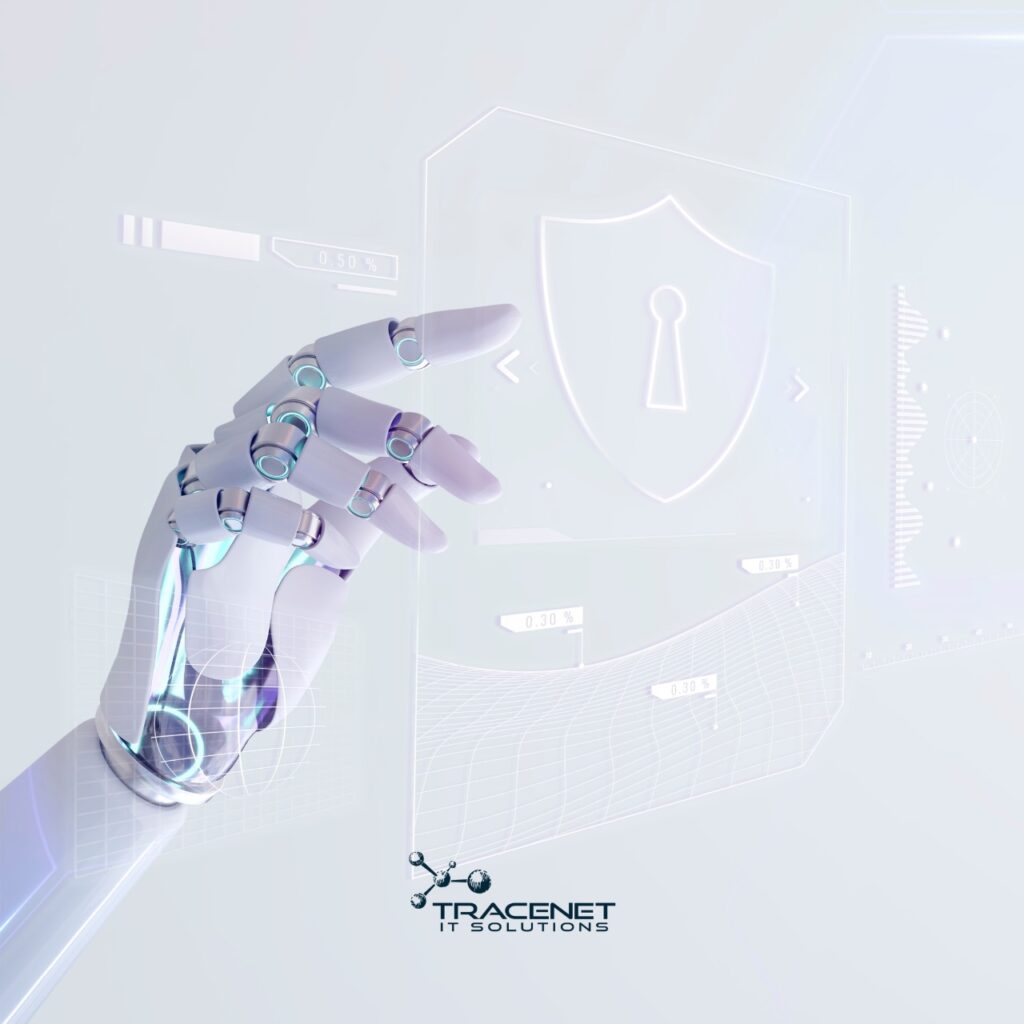In response to the increasingly constant cybersecurity threats on the digital landscape, Artificial Intelligence (AI) is gaining ground as a powerful tool for protecting data and systems.
But how exactly can AI help strengthen cybersecurity? And what are its limits?
Find out in today’s blog what AI is in cybersecurity and how it is applied, as well as its advantages and disadvantages and what should be considered when using it.
What is AI in cybersecurity?
Artificial Intelligence (AI), simply put, refers to the ability of machines and software to perform tasks that normally require human intelligence, such as recognizing patterns, learning from experience, and making decisions.
In cybersecurity, AI can be applied to detect, analyze, and mitigate cyber threats in real-time, optimizing the response and helping to predict new attacks before they even happen.
With AI, security solutions can analyze vast volumes of data, identify anomalous behavior, block automated attacks, and even improve defenses based on continuous learning.
In other words, it can be applied to various areas of cyber security, such as network monitoring, malware protection, traffic analysis, and user authentication.
Advantages of Using AI in Cybersecurity
One of the biggest advantages of AI in cybersecurity is its ability to detect and respond to threats in real time.
AI can analyze large volumes of data in fractions of a second, identifying patterns of behavior that indicate malicious activity. This allows it to detect cyber attacks, such as phishing, ransomware, or malware, much faster than any human being or traditional system.
For example, if an AI system identifies an unauthorized access attempt to a server or suspicious communication between devices, it can issue an alert immediately or even block access automatically, preventing the attack from taking place.
What’s more, AI not only helps identify attacks in progress but can also predict future threats based on historical patterns and trends. Machine learning algorithms (an area of AI) can analyze past data to identify vulnerabilities and possible points of attack before hackers exploit them.
This predictive analysis helps to anticipate attacks and apply corrective measures before problems become critical, which is essential to ensure business continuity and the protection of sensitive data.
In addition to the advantages of this combination, we can highlight automation and efficiency. After all, cybersecurity is a highly dynamic field, with new threats constantly emerging.
In this case, AI can automate many repetitive and time-consuming tasks: such as log analysis and traffic monitoring, allowing security professionals to focus on more strategic issues.
In addition, automation reduces incident response times and minimizes the impact of attacks. This is particularly important in large-scale environments, where human teams can’t monitor all systems and networks continuously.
To conclude, we can say that AI can learn from new threats as they emerge, adjusting its defense strategies based on real-time data. This continuous learning makes AI systems increasingly efficient at detecting and responding to unknown attacks, without the need for direct human intervention.
As a cyber attack evolves or new hacking techniques are developed, AI can adapt automatically, adjusting security responses to protect the network without relying on manual updates.
Disadvantages of using AI in cybersecurity
Despite its many advantages, the use of AI in cybersecurity also presents challenges and limitations.
This is because, firstly, AI relies heavily on data to function properly. To be effective, it needs to be trained with accurate, relevant, and high-quality data.
If the training data is inaccurate or out of date, AI can generate false alerts or fail to identify real attacks. In addition, data quality can be affected by factors such as lack of context or incomplete information, which can hinder AI analysis and response.
It is therefore essential that organizations provide AI with well-structured data and that it is constantly fed with up-to-date information.
As for false positives and negatives, we would point out that although AI is capable of detecting threats with high accuracy, unnecessary alarms can occur, overloading security analysts, or even the opposite, where attacks go unnoticed, compromising the organization’s security.
Although AI systems are improving over time, the risk of false alerts and detection failures still exists, which can reduce confidence in automated solutions. In this context, it is also worth noting that integrating AI into an existing cybersecurity system can be a complex and time-consuming task.
The technology requires robust infrastructure and qualified experts to ensure that it is implemented correctly and works efficiently. In addition, AI requires ongoing maintenance, such as adjustments to its algorithms and constant training with new data to ensure that it continues to detect threats effectively.
In many organizations, especially those with limited resources, implementing AI in cybersecurity can be a significant challenge, both technically and financially.
Finally, one of the biggest concerns with the use of AI in cybersecurity is the possibility of hackers manipulating the system. Sophisticated attacks, such as adversarial AI, can trick the AI’s machine learning algorithms, subtly altering input data so that the AI makes mistakes and fails to detect threats.
This manipulation can compromise network security and allow hackers to exploit vulnerabilities discreetly. This means that, just like any other technology, AI can also be a target for cyber attacks, which requires a robust and constantly updated approach to protecting AI-based systems.
Conclusion
Artificial Intelligence offers clear benefits in cybersecurity, such as the ability to quickly detect and respond to threats, automate processes, and improve the efficiency of defenses.
However, there are also significant challenges, such as the need for accurate data, the possibility of detection errors, and the complexity of implementation.
When adopting AI for cybersecurity, organizations should be aware of these limitations and consider implementing hybrid solutions that combine artificial intelligence with human supervision.
At Tracenet Solutions, which specializes in cybersecurity and information technology, we understand the impact of new technologies on the digital world and are prepared to help companies integrate AI solutions safely and efficiently, guaranteeing data protection and business continuity.



